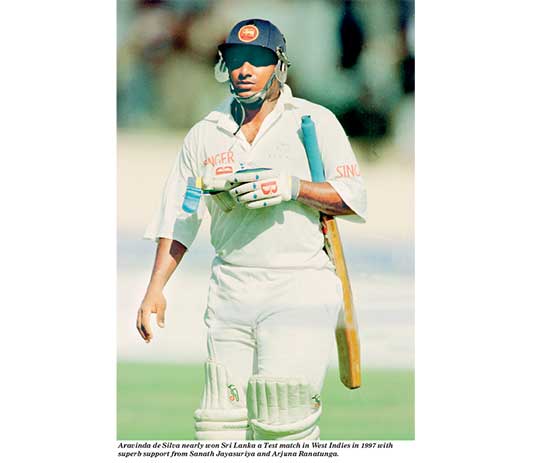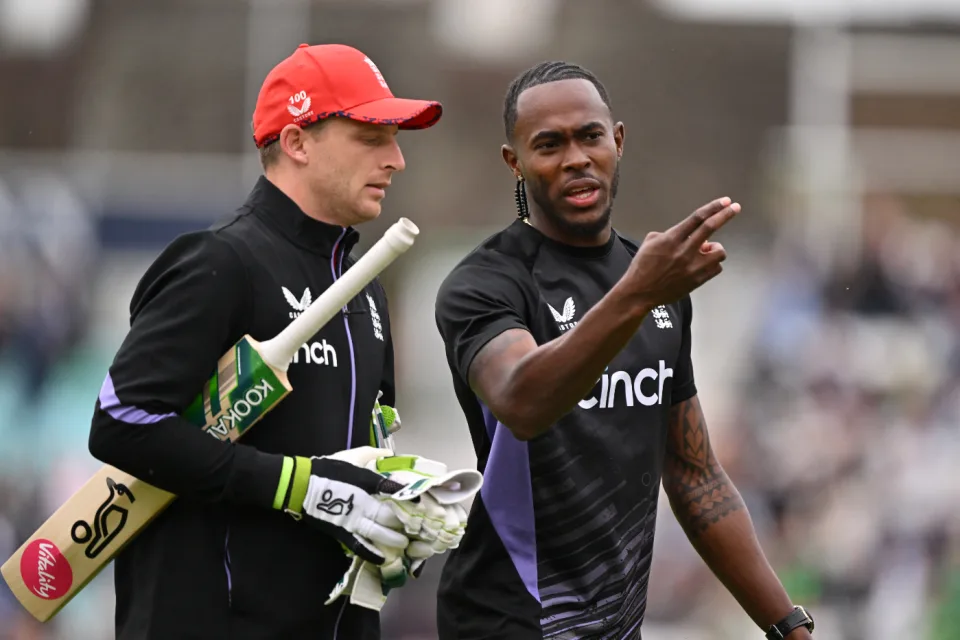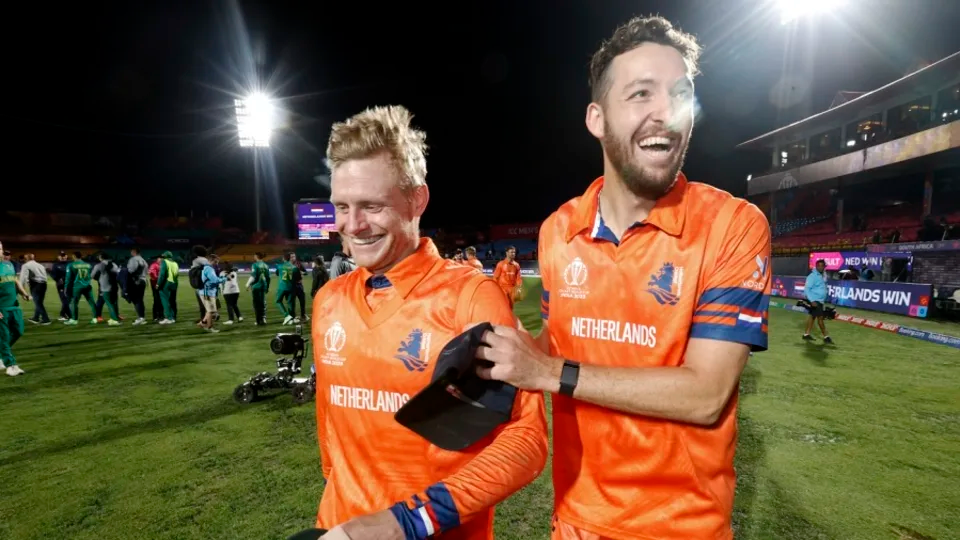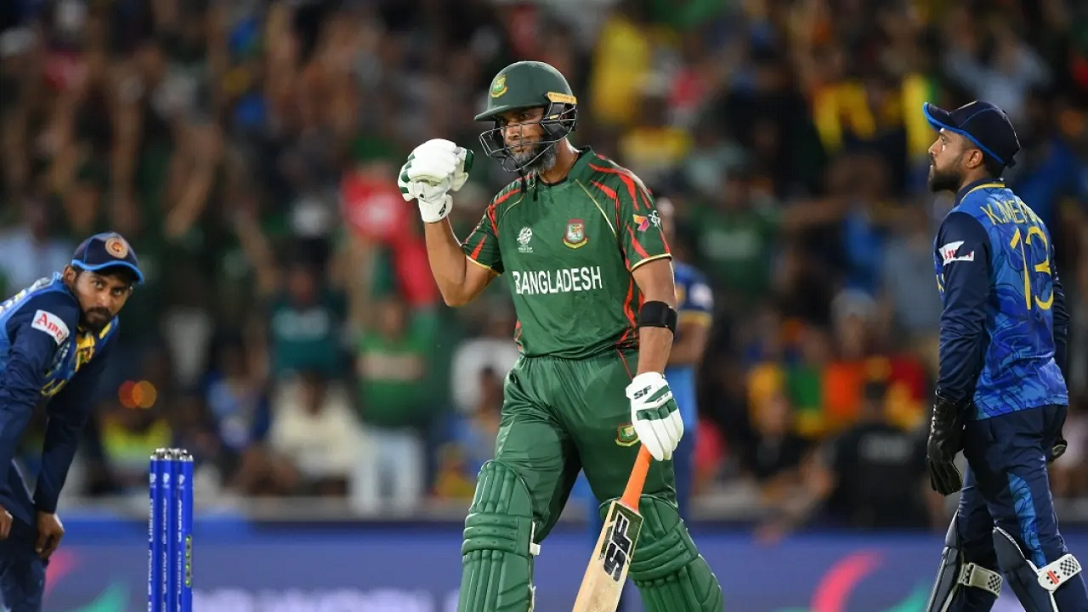Sports
History that wasn’t made in the Windies

A look back at Sri Lanka’s first Test tour of West Indies
by Aravinthan Arunthavanathan
March 26th marked the 13th anniversary of Sri Lanka’s first Test victory in the Caribbean. Ever since, Sri Lanka has gone on to record only one more victory during the last tour in 2018. Despite these two special wins, the most intriguing Sri Lanka- West Indies Test match overseas remains to be the second Test of Sri Lanka’s maiden tour in 1997. It’s a Test which often goes unnoticed but was special in many ways.
When Sri Lanka set foot in the West Indies in 1997, they were the reigning ODI champs. But the eagerness to prove their mark in white flannels, resulted in an odd schedule consisting of two Tests and a solitary ODI. The late Tony Cozier would call that the equivalent of bringing down Michael Jackson to perform for an opera.
During the first Test In Antigua Sri Lanka were in with a great chance to bat the West Indians out. With a thirty plus lead and the best of batting conditions in hand, Sri Lanka succumbed to the famous West Indies line up for a paltry 152 leaving the Windies with an easy chase. The loss by six wickets on paper did not reveal the closeness of the game. With a golden opportunity lost Sri Lanka moved to the scenic Arnos Vale in St. Vincent’s, one of the most picturesque venues in the world hosting its first Test match.
Ravindra Pushpakumara who had been drafted in as replacement for Chaminda Vass who was injured wreaked havoc by giving the Winides their own medicine bowling fast and straight. The often erratic and colourful Pushpakumara had a great outing claiming five West Indian wickets.
Pushpakumara dealt early blows by blowing away the top-order with short pitched and full-length deliveries ably supported by Sajeeva de Silva who had the big fish Brian Lara caught and bowled leaving the opposition at five for three. Carl Hooper’s back to the wall half-century propelled West Indies to a paltry 147 leaving Sri Lanka in the driver’s seat.
Sri Lanka got off to a solid start propelled by Sanath Jayasuriya’s fireworks getting them to a lead of ten runs with only three wickets down at the end of the day. However tight bowling by the West Indies did not let Sanath go on his merry way and pegged back the Lankan juggernaut the following morning. This resulted in a flurry of wickets and another golden opportunity missed to seal the deal as Sri Lanka were bundled out for 222 with a lead of 75, which was inadequate given the solid start Sri Lanka had. Sri Lanka in fact had lost seven wickets for 44 runs with Hooper claiming a five wicket haul.
Sri Lanka’s grip started to loosen as the opposing openers put on 62 almost wiping out the deficit before Pushpakumara cleaned up Sherwin Campbell to provide an opening. However, the Sri Lankan comeback was short lived as Lara recovered from a slump of form and dominated the bowling in a sign of what was in store for the future by scoring a century. With Lara back in the hut holding out to Jayasuriya at square leg off Dharmasena the lead was 197 with five wickets left. The Sri lanka resurgence was again thwarted by the West Indian pair of Ambrose and Holder who put up a fifty plus stand for the eighth wicket. Murali came to Sri Lanka’s rescue picking up five wickets and keeping the lead to a manageable 268 leaving an achievable target. Nevertheless, it was an era where even chasing 200 in the last innings was a challenge as India realized only weeks prior being bowled out for 81 chasing a mere hundred in Barbados.
The fortunes had fluctuated with the upper hand being rather handed on a platter to the opposition by both teams as opposed to being wrestled back. Nevertheless, with Sanath, Aravinda and Arjuna in good nick there was a good chance Sri Lanka were on the verge of making history posting their fourth overseas win. It would be a remarkable moment given the momentum Sri Lanka had built during the period.
The Sri Lankan chase was dealt a severe blow as Walsh cleaned up Sanath attempting a flick which had fetched tons of runs in white ball formats. This was followed by the dismissal of Atapattu bringing Aravinda to the crease. The maestro showcased his absolute brilliance by smacking eighteen runs off Ian Bishop’s penultimate over of the day.
With less than 200 to chase on the final day with Aravinda at the crease in prime form, Sri Lankan hopes were high. Despite the loss of Mahanama in the morning session Aravinda and Arjuna formed a solid partnership smacking the Windies attack to all parts of the ground prior to lunch deflating the morale of the West Indians. With rain intervening and killing Sri Lanka’s momentum the resumption saw them needing a mere 80 runs with seven wickets in hand. Finally, the game seemed to have been sealed by the Lankans.
True to the pattern of events that had preceded, Walsh nailed a perfect yorker to clean up Aravinda immediately after resumption of play. He made a classy 78. Calamity struck the Sri Lankan camp as a cluster of wickets followed as had been the case with both teams during the series which saw Sri Lanka succumb to 231 for eight from a commanding 189 for three. From a position of dominance Sri Lankans were pushed against the wall hoping for divine intervention to win or at least escape unscathed. The rain gods came to Sri Lanka’s rescue immediately after Murali lobbed a short, pitched delivery to short leg and conceded Sri Lanka’s eighth wicket to the West Indies attack, who were going all out for the kill.
In hindsight, it was an opportunity which Sri Lanka would regret missing. Still with Arjuna at the other end remaining on 72 not out there was the remotest of possibilities of pulling of a miracle, but it was a situation Sri Lanka should never have got into given the commanding positions they were in during the game. Despite the most favorable result being obtained it remains by fast the most intriguing duel between both sides which the nation did not witness due to a coverage black out.
Sri Lanka may not have created history, but they gave the West Indians who were still a force to reckon especially at home a good fight which showed the world that Sri Lanka were not merely a white ball oriented team but had what required to fight it out at the Test level too.
Sports
England face Australia in the battle of champions

The first truly heavyweight clash of this expanded T20 World Cup format comes freighted with both history and subplots. A rematch of the 2010 World T20 final at Kensington Oval, the match pits Jos Buttler’s defending champions – who are aiming to become the first team to retain the trophy – against the Australian winning machine, victors at the 2021 edition and current world title-holders in Test and ODI cricket. And that’s before you throw in the Ashes for afters.
Already there is added pressure on England, after the rain in Bridgetown led to a share of the points in their opener against Scotland (and that having conceded 90 runs from 10 overs without taking a wicket in a tepid bowling display). Lose to their oldest rivals and it will leave their Super 8 prospects open to being waylaid by the perils of net run-rate calculations, or worse.
The Scotland match was the third abandonment in five suffered by England, after a rain-affected home series against Pakistan, which has clearly hampered their readiness for this campaign after almost six months without playing T20 together. It does not take much for a side to click in this format – and England looked in decent shape when they did get on the field against Pakistan – but Buttler will be anxious for things to go their way on Saturday, if only to avoid further questions referencing the team’s disastrous ODI World Cup defence last year.
Australia, under the laidback leadership of Mitchell Marsh would love nothing more than to add to the English sense of jeopardy – having helped bundle them out of the tournament in India on the way to taking the crown. Their head to head record is less impressive in T20 however, with England having won six of the last seven completed encounters, as well as that 2010 final.
Despite a wobble with the bat, Australia avoided mishap against Oman earlier in the week, the experience of David Warner and Marcus Stoinis shining through in difficult batting conditions. Surfaces in the Caribbean – not to mention those games staged in the USA – have already had teams scratching their heads; rather than the “slug-fest” England had prepared for, following a high-scoring tour of the Caribbean in December, it looks as if boxing smart may be the way to go.
Speaking of Warner, this could be the last time he faces up against England in national colours – and another match-winning contribution would likely reduce the chances of them meeting again in the knockouts. On the other side of the card is Jofra Archer, fresh from an emotional maiden outing at Kensington Oval and ready to take on Australia for the first time in any format since 2020. Can Mark Wood fire up England’s campaign, as he did during last summer’s Ashes? Will Pat Cummins be back to harass the old enemy once again? Seconds out, it’s almost time to rumble.
Cummins is set to return after being rested for the Oman game, which saw Mitchell Starc leave the field with cramp. Starc is understood to be fine and could keep his place – which would likely see Nathan Ellis miss out. Marsh is still not fit to bowl, with Australia likely to continue with the allrounder combination of Stoinis and Maxwell to give them cover.
Australia (probable XI): David Warner, Travis Head, Mitchell Marsh (capt), Glenn Maxwell, Marcus Stoinis, Josh Inglis (wk), Tim David, Pat Cummins, Nathan Ellis/Mitchell Starc, Adam Zampa, Josh Hazlewood
The one change England may consider is Reece Topley coming in for Wood, with the expectation that there will be some rotation among the seamers through the course of the tournament.
England (probable XI): Phil Salt, Jos Buttler (capt & wk), Will Jacks, Jonny Bairstow, Harry Brook, Liam Livingstone, Moeen Ali, Chris Jordan, Jofra Archer, Adil Rashid, Reece Topley/Mark Wood
[Cricinfo]
Sports
South Africa up against their bogey team in batter-unfriendly New York

Once is coincidence, twice is a clue, and three times is proof.
To paraphrase Agatha Christie, that is the narrative around South Africa’s meeting with Netherlands at this T20 World Cup.
The Dutch beat South Africa at the 2022 tournament and ended their semi-final hopes in a match where South Africa appeared to be sleep walking, and then beat them again at the 2023 ODI World Cup, where they exposed South Africa’s vulnerability in the chase. If they to do the treble, not only will Netherlands take the lead in Group D, but they will offer conclusive evidence of the threat they pose to Full Members, especially South Africa.
Of course, it will take some doing after South Africa’s opening performance against Sri Lanka, where they reduced their opposition to their lowest T20I total and chased it down in fairly straightforward fashion thanks to the most stable middle-order of their white-ball era. In Aiden Markram, Tristan Stubbs, Heinrich Klaasen and David Miller, South Africa have bankers and big-hitters and, for this match, they also have the advantage of experience. They’ve already played at Eisenhower Park, and have first-hand knowledge that run-scoring doesn’t come easily;Klassen said they are prepared to use their “cricket brains” and play “smarter cricket”.
But the conditions could be good news for Netherlands, who are not naturally a line-up of big hitters and build their innings on a foundation of turning ones into twos. In other words, they tend to take a slightly more conservative approach to batting, which may work well here, but they’ll be wary of the uneven bounce of the surface and will have to come up with plans to counterattack especially against South Africa’s seamers. Their own bowlers were exemplary in Dallas and will look to build on that performance against a line-up that will likely be more proactive than Nepal’s, but who they have managed to keep quiet not once, but twice in the past. Third time’s the charm, they say.
Anrich Nortje’s stunning return to form against Sri Lanka means South Africa may not have to tinker with the bowling combination, and Gerald Coetzee and Tabraiz Shamsi may have to wait their turns to get a game. The batting line-up should be unchanged, with no space for Ryan Rickelton yet.
South Africa: Quinton de Kock (wk), Reeza Hendricks, Aiden Markam, Tristan Stubbs, Heinrich Klaasen (wk), David Miller, Marco Jansen, Keshav Maharaj, Kagiso Rabada, Ottneil Baartman, Anrich Nortje
Conditions in New York may tempt Netherlands to include an extra seamer and they have Kyle Klein in their squad. But it could come at the expense of a shortened batting line-up and they may not want to risk that.
Netherlands: Michael Levitt, Max O’Dowd, Vikramjit Singh, Sybrand Engelbrecht, Scott Edwards (capt, wk), Bas de Leede, Teja Nidamanuru, Logan van Beek, Tim Pringle, Paul van Meekeren, Vivian Kingma
[Cricinfo]
Latest News
Mustafizur, Rishad, Hridoy dazzle in Bangladesh’s tight two-wicket win over Sri Lanka

Nuwan Thushara’s last over brought Sri Lanka screaming back into the match,as he first bowled Rishad Hossain, and then nailed Taskin Ahmed in front of the stumps with a pinpoint swinging yorker. This left Bangladesh eight wickets down, with 12 runs still to get.
However, the experienced Mahmudullah was at the crease for Bangladesh, and despite some further nervy moments, pushed Bangladesh across the line off the last ball of the 19th over.
But this was a match chiefly decided by Bangladesh’s own outstanding bowling. Mustafizur Rahman was the best among them, using shorter lengths and his cutters efficiently, to claim figures of 3 for 17. Rishad Hossain’s three-for through the middle overs also kept Sri Lanka quiet.
Mustafizur was instrumental in Sri Lanka’s downward spiral through the middle overs, which culminated in a crash-and-burn end. Ultimately, their inability to find boundaries, or even rotate strike against good Bangladesh bowling resulted in their downfall. A score of 125 for 9 always seemed poor on a decent pitch, even if their bowlers made a match of it in the end.
Brief scores:
Bangladesh 125 for 8 in 19 overs (Towhid Hridoy 40, Litton Das 36; Dhanajaya de Silva 1-11, Nuwan Thushara 4-18, Wanidu Hasaranga 2-32, Matheesha Pathirana 1-27) beat Sri Lanka124 for 9 in 20 overs (Pathum Nissanka 47, Dhananjaya de Silva 21; Tanzim Hasan Sakib 1-24, Taskin Ahmed 2-25, Mustafizur Rahman 3-17, Rishad Hossain 3-22) by two wickets
[Cricinfo]





















